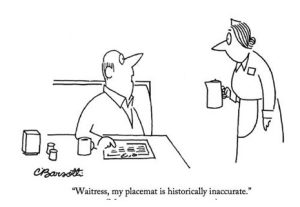My Introduction:
Whether you intend to self-publish or submit your manuscript to an agent or publishing house, I believe that the services of a professional editor are crucial to achieving success. I recently read a review that praised a novel’s storyline but ultimately trashed the work for improper grammar, tense shifts, the whole nine. I’m sure the writer was mortified, particularly because previous to writing the novel, this person taught English Literature. This person is a good writer and deserved to give themself a better chance to be taken seriously.
I am completely paranoid and unwilling to give anyone a reason to dismiss my work, so whether or not my work is loved, no one can fault the grammar and for that, I am thankful to Laurie. I fail to understand why writers neglect this step. Frugality? Hubris?

Laurie Skemp of Book Editing Pro is one of the most insightful, hard working editors I have ever met. She truly gives herself over to the work while allowing for voice. On her website, she provides examples of the various levels and types of editing she does. I started by sending her a few pages as was astounded (and upset, let’s be honest – all I wanted was this is great perfect bravo ) at what she did with them.
Here’s a link where you can submit five pages for a free edit to see exactly how she works.
In the following piece, Laurie provides links to websites that she recommends (and says some nice things about my new novel which you are not allowed to skip.)
Enough from me.
Musings from an Editor…Character Development – by Laurie Skemp
I had the privilege of working with Jessica on No Name Key, and have just completed reading the first installment of her next novel, Alligator Alley (or Off the Grid). She does an excellent job on setting the tone and style of the book by developing the characters within the first few chapters, providing the reader with basic character elements that make them likable…or not. She also provides enough details that intrigue the reader into wanting to know more…whether it’s about the characters themselves or how the plot plays out.
An interesting article by author Tom Pawlick enumerates nine steps for authors to consider when developing the characters in their stories. Although he writes “plot-driven action thrillers” rather than “character-driven” novels, Mr. Pawlick states an interesting perspective on the need for developing the characters in any novel. After all, as he states, “The goal is to make your readers feel something for your character. The more they care about them, the more emotion they’ll invest in your story. And maybe that’s the secret.” According to Mr. Pawlick, authors should consider these elements when developing their characters: communication style, history, appearance, relationships, ambition, character defects, thoughts, “everyman-ness” and restrictions.
All these details might not be presented in the novel, but any implications or innuendo will make the characters appear more human. By referring to these elements while writing, you will be able to answer these questions: What is the basis and rationale for the characters’ actions, beliefs, and speech, and what bearing does this have on the plot? What is the driving force behind this character and this plot that is compelling me to tell his or her story?
First, create your own template for pertinent details about the characters: physical attributes and appearance, education and/or profession, psychology/driving force behind their actions, background, history, etc.
Or, you can start with what you deem important and supplement it with elements from some of the following sites.
Kira Lerner and Toni Walker at epiguide.com based their form on one created by Rebecca at eclectics.com. Charlotte Dillion also suggests that you will get insight to your characters if you ask them some thought provoking questions. How they answer the questions will help you determine how they will respond to or act in scenes that you present in the story.
From a writer’s perspective, filling out such a form might seem time consuming, but what do you see and know about the characters when you visualize them? And what do you want the reader to see and know about them? Every detail or question in the various categories on the aforementioned forms might not be pertinent in the story (pets, previous relationships, family of origin, every day habits, etc.), but they will help provide consistency and continuity to the manuscript. Other sections (speech and language/communication, mental attitude/personal beliefs, the past) are very relevant in the development of tone, theme, and style of the story.

Although an editor would not deal with the form directly (unless the author included it with the manuscript for reference purposes), it provides the means and information that ensure consistency. I’m sure we’ve all read books that present contrary or conflicting details. For example, I read a book where the protagonist drove up to the house on a Harley but left in a black SUV, and another one where the protagonist’s name appeared misspelled several times in the last chapter. Maybe the typical reader did not notice these things and maybe it was my OCD tendencies as an editor. But these inconsistencies do have a bearing on the quality of the story you are telling. Expound on the details as much as you like, but adhere to those details throughout.
After all, if you don’t truly understand the characters, can you present their story in a way that will draw in the reader? As Mr. Pawlick states in his article, “Maybe every novel is character-driven after all.”
And I am anxiously awaiting the rest of Jessica’s manuscript because I felt something for them, and I want to know more. Just how desperate does the protagonist become? Does she dig herself out of the hole she has dug for herself? Does the nasty, manipulative “witch” of a sister get her just dues? How do the various relationships play out? Hm…time will tell.
But for now… get to work, Jessica!


